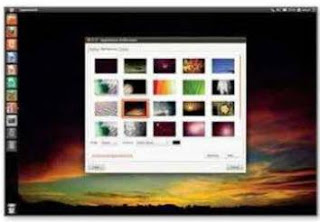Make Use of Old Computing Device
Let’s show you how to give your defunct computer components a second life.
Use an old hard drive as a storage device
Provided it's a decent size, in good condition, and not likely to fail any time soon, you can use your old computer's hard drive as a secondary storage device alongside the hard drive in your new computer. Just open your new computer's casing, connect the old hard drive to the motherboard using a SATA or IDE cable (the cable that connected it to the old computer's motherboard might be useful here), add power and you're in business.
Another option is to use it as an external back-up drive. You can buy enclosures or docking stations, which will let you connect the drive to a USB port. The big advantage of using a docking station is you can quickly switch between various spare disks.
You can use a docking station to turn your old hard drive into an external back-up drive
If you want to sell your hard drive, make sure you wipe it thoroughly using a tool like Darik's Boot and Nuke (free from www.dban.org). This securely erases the contents, making any data completely unrecoverable.
Re-use old PC memory
Depending on the age of the computer you're ditching, it might be possible to put the old memory (RAM) to good use in a new computer. The main stumbling block is that DIMMs (Dual In-Line Memory Modules) come in several flavors, including SDR, DDR, DDR2 and DDR3. The number of pins and notch positions are different for each type. So, if your new motherboard only supports DDR3, and your previous computer used DDR2, the old DIMMs won't f it. You can use the Crucial System Scanner (www.crucial.com/uk/systemscanner) to find out the type of RAM you have.
If the DIMMs fit and you have spare slots free, there's still the issue of Windows' memory restrictions to bear in mind. The 32-bit versions of Windows 7 can make use of around 3.5GB of RAM. The 64-bit Home Premium edition can handle 16GB, while the Professional or Ultimate releases support up to 192GB.
Insert your old RAM into a new PC if it has the same DIMM configuration
If you're thinking of using old memory modules from a desktop computer to speed up a laptop, forget it. The type of memory might be the same (DDR2 for example), but laptop memory is structurally different.
A new role for your old expansion cards
Many modern motherboards come with on-board sound, graphics and networking hardware, but you can still add separate cards to your computer. Indeed, if you play a lot of games, then a 3D graphics card is an essential purchase. Internal cards can easily be moved from one computer to another, but it's only worth doing if you're going to see a clear benefit. You can sell unwanted cards, but if they're not worth keeping yourself, you probably won't get much for them. Your best bet is just to hang on to them for now. They might come in handy if your existing hardware fails for any reason, as you can use it to try and isolate tricky-to-solve problems.
Your old RAM and graphics cards can easily be moved from one computer to another
Turn your old PC into a new media centre
Rather than breaking down an ageing computer into its component parts, you could consider putting it to a new use, provided it all still works. The obvious thing to do is turn it into a media centre PC and hook it up to your TV, as we explained in our last 'How To' (see Issues 277-279). Alternatively you could use it as a central store for all your music, and stream songs to other networked computers using iTunes or Windows Media Player. You could pass it on to other family members or set it up in another non-obvious location, such as the kitchen, where it can be used to stream TV programmers or radio stations, or as an always-on email hub. Finally, you could use it to experiment with a less power-intensive operating system, such as Ubuntu Linux (www.ubuntu.com) or Chrome OS (http://chromeos.hexxeh.net).
Put an old PC to new use by installing a less power hungry OS such as Ubuntu
New Uses for Old Laptops
Laptops are more versatile than old desktop PCs because of their size and portability. If you have one going spare, you could try the following ideas:
Turn it into a Digital Photo Frame
You can simply turn your laptop into a photo frame without making any changes, but it won't look very attractive. A little DIY, with help from http://bit.ly/lapframe281, will make it look much better.
Use it as a Digital Recipe Book
A laptop looks more at home in the kitchen than a desktop PC, so you could use it to store all your favorite recipes.
Use it as a Dedicated Skype Station
If you use Skype a lot, set up the laptop somewhere private, hook up a webcam and have it permanently ready to use for calls.
Turn it into a HotSpot
Connectify (http://connectify.me) lets you wirelessly share your internet connection with friends, neighbors and mobile devices. Your laptop will need to have a built-in Wi-Fi card or adapter and run Windows 7.










 TechQuark is a mobile-friendly website. Simply bookmark
TechQuark is a mobile-friendly website. Simply bookmark 